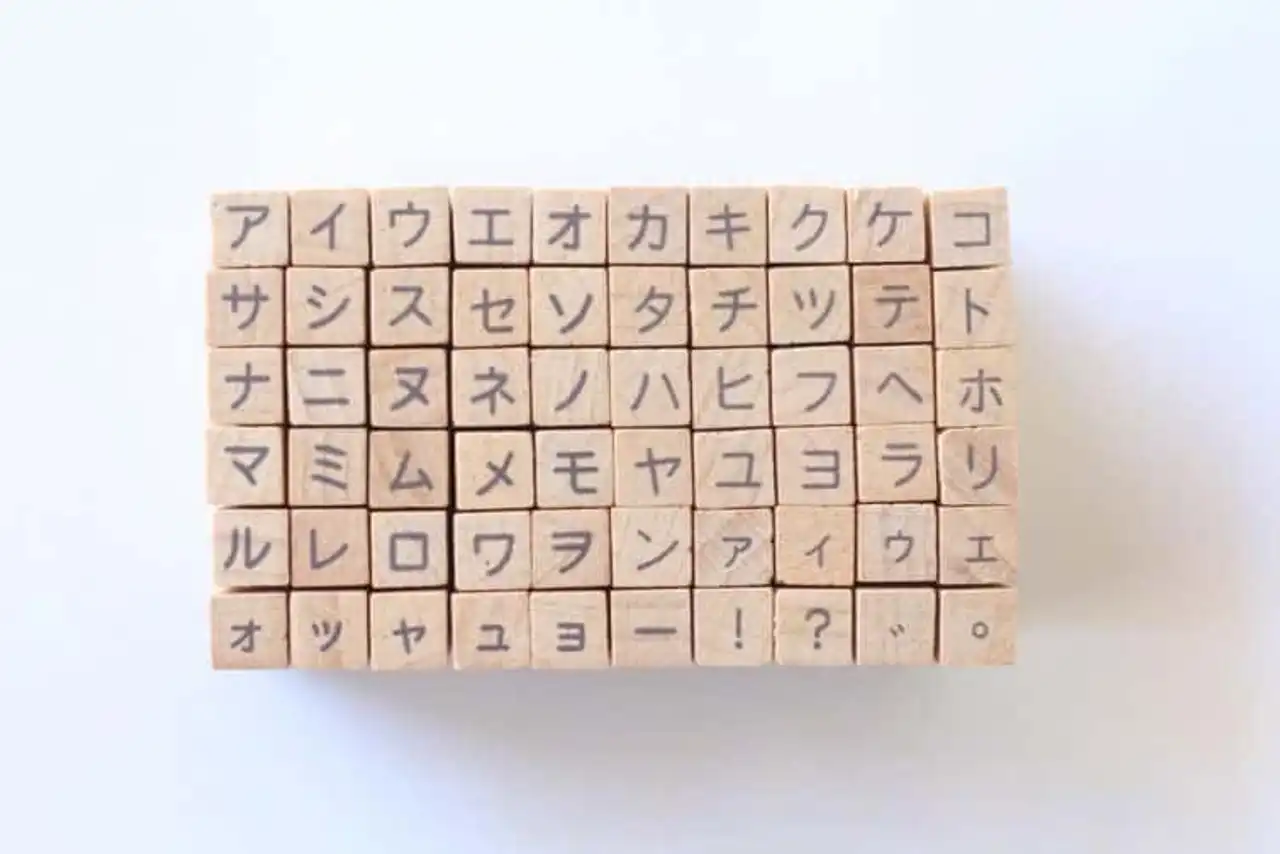You want to pierce all the secrets of the Japanese language? Here are the 7 steps to learn Japanese and travel calmly!
The Japanese always attracted you, but you don't know where to start? With its way of writing radically opposed to French and its three different alphabets, difficult not to be destabilized... and yet, you are only a few clicks from the beginning of your learning.
A bit of attendance, time, and some good tips to start well, and hop! Hold your sleeves, breathe a good blow, and follow the guide to discover and learn the basics of the rising Sun language. (Let's go)
1. Learn hiragana and katakana

Photo credit: Shutterstock – Kanizuki
The best way to start learning Japanese is to start by getting familiar with writing systems. Japanese uses four alphabets: hiragana ♪ , katakana webcast ♪ kanji 漢✱ , ideograms borrowed from Chinese, and rōmaji , which corresponds to a Latin transcription of Japanese words.
If the basis of Japanese writing is the system of hiragana , it does not allow to read or write correctly. While the hiragana correspond to another way of representing the letters, kanji transmit easily identifiable ideas to them at a glance. Their use helps to avoid confusion in writing and quickly becomes indispensable when you begin to look into it. I mean, katakana are used to write the words of foreign origin, such as for example california (batā, English) butter ), which means butter.
The best way to learn the three Japanese alphabets (or syllables) is to start with the hiragana , then the katakana . For that, nothing simpler! Just tap hiragana or katakana on Google Images to find lists including the order of the traits and the transcription in rōmaji . It is also possible to learn syllables using the application Duolingo even if the handwriting method remains effective to better memorize them.
2. Attack on kanji and vocabulary

Photo credit: Shutterstock – juliare
After one or two weeks to pick up your hiragana and katakana , you're ready to go to kanji . As explained in the previous part, kanji may seem intimidating, but no panic! After a little practice, you won't be able to do it anymore...
In books or on the internet, vocabulary words are usually written in kanji annotated hiragana then translated. Learning vocabulary is therefore a good way to discover kanji , but also continue to work the other two syllables, still a little fresh in your head. There are many books (in French and English) that list vocabulary words by classifying them by subjects or by difficulty level. Applications like Duolingo Also allow you to learn the step-by-step vocabulary, in parallel with the Kanji. If you can, don’t hesitate to train you to write words and kanji that you learn, because it can help you memorize them!
To review your vocabulary, consider downloading the tool Anki (available on mobile or computer) ! This application based on the concept of flashcards will allow you to create your own vocabulary lists, take advantage of the lists made available by the community and thus learn the bases in Japanese. If you have some coding concepts, you can easily customize your flashcards to better stick to your needs. Anki allows you to program review session reminders, but also to see your statistics to better understand your strengths and difficulties.
3. Learn grammar rules

Photo credit: Shutterstock – Morumotto
(otsukaresama desu – good work!)
If you have been able to learn your two syllables, the basics of vocabulary, and about thirty kanji Bravo! The grammar is now the only obstacle (or almost) that separates you from the intermediate level in Japanese. If many applications are useful to discover a language, most of them offer you to memorize all-out phrases that will not allow you to understand a conversation or to express yourself.
In order to deepen the subject of Japanese grammar, opt for specialized books (in English or French), which will offer you comprehensive lists of grammar points and detailed explanations. Minna no Nihongo is one of the references in this field, and is available on the Internet as well as in specialized bookshops.
4. Work your oral understanding

Photo credit: Shutterstock – AnaLysiSStudiO
Ah, the famous oral comprehension... so many memories of the baccalaureate test! Rest assured, no one will force you to listen to CDs of a quality worthy of a pirate recording of the 1850s. There is now a multitude of possibilities to familiarize yourself with the oral in Japanese. Many dorama (Japanese series), animated and films are available on most streaming platforms.
You can also go to YouTube and type in Japanese the subjects you are interested in (for that you will only activate the Japanese keyboard on your phone or computer). Be curious and feel free to watch the videos several times, with or without subtitles to test your understanding.
If the meaning of a word escapes you, have the reflex Jisho : This free online collaborative dictionary allows you to search for words in English or Japanese using the syllabary of your choice. You can also perform a voice search or “dessiner” the word or the kanji which you want to know the meaning. Just watch the order of the traits and respect the form of ideograms!
In the same style, Weblio is also very useful and gives examples of phrases as well as expressions using the word of your research. Des musts to develop your vocabulary and your ability to express yourself!
5. Read in Japanese

Photo credit: Shutterstock – nito
If classical Japanese literary totally differs from spoken Japanese, it is however possible to work his Japanese by reading, without too much difficulty!
Some specialized bookstores like the bookstore Junku In Paris (Saint-Anne) offer to purchase a multitude of magazines imported directly from Japan. From fashion to decoration to idols (the famous aidoru ) and the kitchen, there are for all tastes!
Attention, however, to the price, which is higher than that of French magazines because of import costs. If you are not interested in magazines, you can also opt for magazines manga . Shojō or shōnen , you will only have to make your choice! If you live around Paris intra-muros, the bimonthly newspaper Ovni (free and edited by a Franco-Japanese media) deals with local subjects in Japanese, very practical to practice you!
6. Talk with Japanese

Photo credit: Shutterstock – Sanga Park
It is not necessarily necessary to go to Japan to speak Japanese with natives! Sites like Lingueo allow you to take Japanese classes with natives without moving from home, and enjoy content tailored to your needs and goals.
In Paris, Rue Sainte-Anne is one of the epicentres of the city’s Japanese community. Bookshop, restaurants, cafes... Why not enjoy your free time to taste some freshly prepared specialties like anpan or sandwiches gyoza offered by the Aki bakery? Your challenge, order only in Japanese!
For the most shy, everything is not lost! There are many sites to find correspondents who share your interests. You can use your new talents to write (and receive) postcards in Japanese, and maybe to share your own culture! Skype, Zoom, Messenger and other chat applications will even allow you (almost) to meet in person.
7. Go to Japan

Photo credit: Shutterstock – William.Vaccaro
If you have arrived so far, you are ready to go to Japan and enjoy your stay in the country of the rising Sun without hitting the language barrier. It is well known, travelling is one of the best ways to move quickly when learning a foreign language.
On site, meet, chat with Japanese people (usually very friendly and admirative when foreigners speak their language), and immerse yourself in this culture rich in traditions! This is the best way to learn Japanese quickly! Who knows, your correspondent may even be waiting on the spot...








Loading comments ...